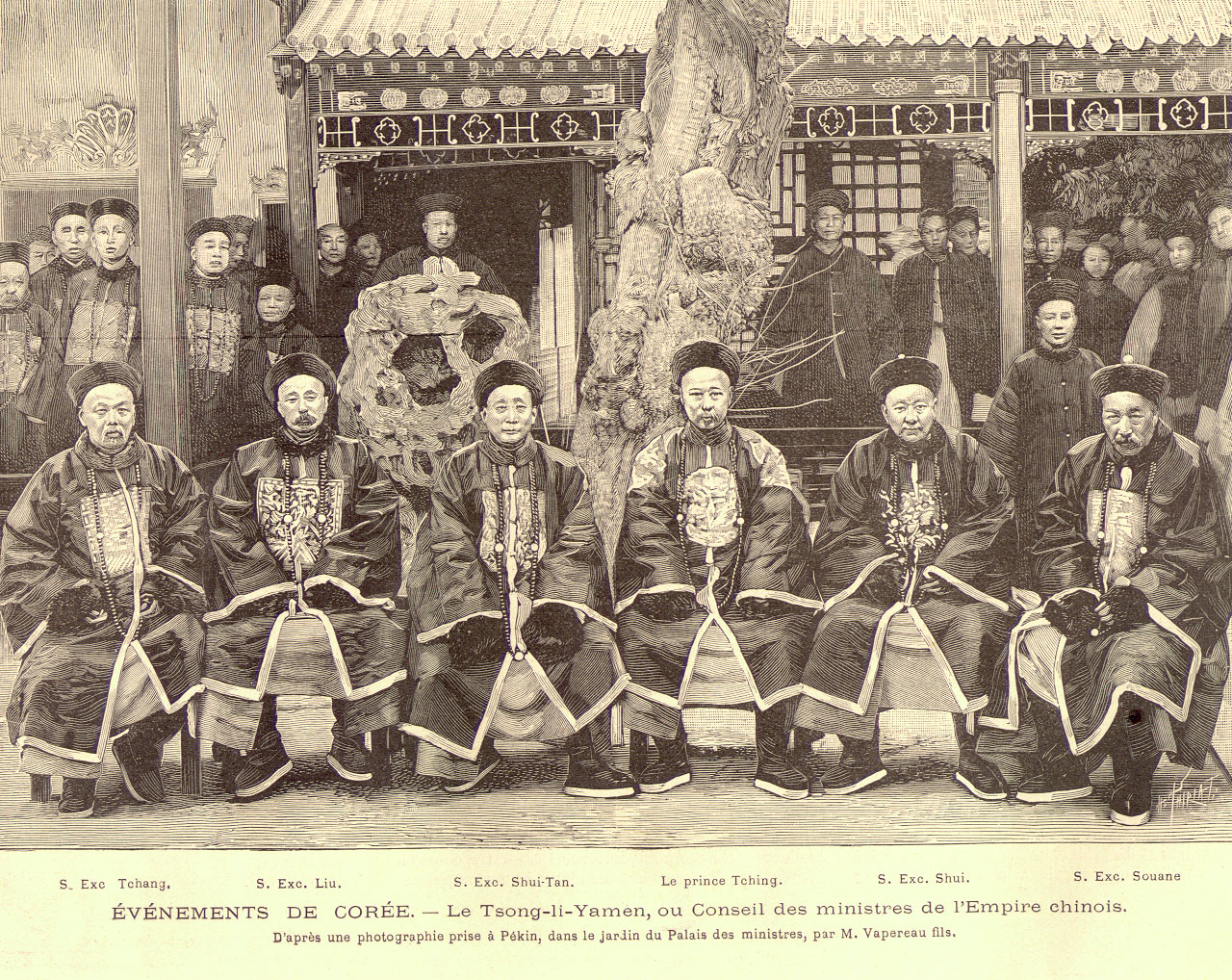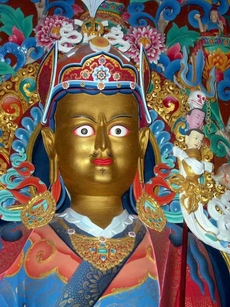|
Colman Macaulay
Colman Patrick Louis Macaulay (16September18493May1890) CIE was an administrator in British India and partly responsible for negotiating the opening of British trade with Tibet. Early life Macaulay was born in Belfast, Northern Ireland to Patrick Macaulay J.P. and the youngest daughter of Bernard Coleman, a Catholic from the West of Ireland. From the age of nine, he was educated at Ratcliffe College near Leicester, England, and later at the School of the Jesuit Fathers in Randalstown, County Antrim, before graduating from Queen's College in Belfast. India In 1867, Macaulay passed the Indian Civil Service entrance examination and was sent to Bengal, in the north east of India as one of those selected by Sir George Campbell to test his theory that civilians should serve in all branches of the administration. After serving as District Inspector in Bacoorah he was appointed assistant secretary in the Bengal office in 1875. In May 1990 he became financial secretary to the Government ... [...More Info...] [...Related Items...] OR: [Wikipedia] [Google] [Baidu] |
Order Of The Indian Empire
The Most Eminent Order of the Indian Empire is an order of chivalry founded by Queen Victoria on 1 January 1878. The Order includes members of three classes: #Knight Grand Commander ( GCIE) #Knight Commander ( KCIE) #Companion ( CIE) No appointments have been made since 1947, the year that British India gained independence as the Union of India and Dominion of Pakistan. With the death of the last surviving knight, the Maharaja Meghrajji III of Dhrangadhra, the order became dormant in 2010. The motto of the Order is ''Imperatricis auspiciis'', (Latin for "Under the auspices of the Empress"), a reference to Queen Victoria, the first Empress of India. The Order is the junior British order of chivalry associated with the British Indian Empire; the senior one is The Most Exalted Order of the Star of India. History The British founded the Order in 1878 to reward British and native officials who served in British India. The Order originally had only one class (Companion), b ... [...More Info...] [...Related Items...] OR: [Wikipedia] [Google] [Baidu] |
Animal Pound
An animal pound is a place where stray livestock were impounded. Animals were kept in a dedicated enclosure, until claimed by their owners, or sold to cover the costs of impounding. Etymology The terms "pinfold" and "pound" are Saxon in origin. ''Pundfald'' and ''pund'' both mean an enclosure. There appears to be no difference between a pinfold and a village pound. The person in charge of the pinfold was the "pinder", giving rise to the surname ''Pinder''. Village pound or pinfold The village pound was a feature of most English medieval villages, and they were also found in the English colonies of North America and in Ireland. A high-walled and lockable structure served several purposes; the most common use was to hold stray sheep, pigs and cattle until they were claimed by the owners, usually for the payment of a fine or levy. The pound could be as small as or as big as and may be circular or square. Early pounds had just briar hedges, but most were built in stone o ... [...More Info...] [...Related Items...] OR: [Wikipedia] [Google] [Baidu] |
Li Hongzhang
Li Hongzhang, Marquess Suyi ( zh, t=李鴻章; also Li Hung-chang; 15 February 1823 – 7 November 1901) was a Chinese politician, general and diplomat of the late Qing dynasty. He quelled several major rebellions and served in important positions in the Qing imperial court, including the Viceroy of Zhili, Viceroy of Huguang, Huguang and Viceroy of Liangguang, Liangguang. Although he was best known in the West for his generally pro-modern stance and importance as a negotiator, Li antagonised the British with his support of Russia as a foil against Japanese expansionism in Manchuria and fell from favour with the Chinese after their defeat in the First Sino-Japanese War. His image in China remains controversial, with criticism on one hand for political and military defeats and praise on the other for his success against the Taiping Rebellion, his diplomatic skills defending Chinese interests in the era of unequal treaties, and his role pioneering China's Kaiping Tramway, in ... [...More Info...] [...Related Items...] OR: [Wikipedia] [Google] [Baidu] |
Zongli Yamen
The ''Zongli Yamen'' (), short for Office for the General Management of Affairs Concerning the Various Countries (), also known as Prime Minister's Office, Office of General Management, was the government body in charge of foreign policy in imperial China during the late Qing dynasty. It was established by Prince Gong on 11 March 1861 after the Convention of Beijing. It was abolished by the Qing government in 1901 and replaced with a Foreign Office of ministry rank. The former site of the ''Zongli Yamen'' is now located in Dongtangzi Hutong, Dongcheng District, Beijing. Nearly all the buildings are preserved in good condition. Meaning of name ''Zongli Yamen'' is a traditional abbreviation of the official name (), literally meaning "Office in Charge of Affairs Concerning All Nations".The corresponding name in Manchu, the other official language of the Qing Empire, was ''Geren gurun i baita be uherileme icihiyara yamun.'' () A common misconception is that the Zongli Yamen's n ... [...More Info...] [...Related Items...] OR: [Wikipedia] [Google] [Baidu] |
Chefoo Convention
The Chefoo Convention, known in Chinese as the Yantai Treaty, was a treaty between Qing China and Great Britain, signed by Sir Thomas Wade and Li Hongzhang in Zhifu (now a district of Yantai) on 21 August 1876. The official reason for the treaty was to resolve the " Margary Affair," but the final treaty included a number of other items. China regards the Chefoo Convention as an " unequal treaty". Contents The convention consisted of sixteen articles and was divided into three sections. The first section dealt with the resolution of the Margary Affair, calling for the punishment of the people implicated in the murder of Augustus Raymond Margary the year before and stipulating that an indemnity be paid to Margary's relatives. The second section dealt with official intercourse between the two empires and specified the extraterritorial privileges of British subjects in China. The final section dealt with trade, prohibiting the levying of the '' Lijin'' in the treaty ports, outla ... [...More Info...] [...Related Items...] OR: [Wikipedia] [Google] [Baidu] |
Qing Dynasty
The Qing dynasty ( ), officially the Great Qing,, was a Manchu-led imperial dynasty of China and the last orthodox dynasty in Chinese history. It emerged from the Later Jin dynasty founded by the Jianzhou Jurchens, a Tungusic-speaking ethnic group who unified other Jurchen tribes to form a new "Manchu" ethnic identity. The dynasty was officially proclaimed in 1636 in Manchuria (modern-day Northeast China and Outer Manchuria). It seized control of Beijing in 1644, then later expanded its rule over the whole of China proper and Taiwan, and finally expanded into Inner Asia. The dynasty lasted until 1912 when it was overthrown in the Xinhai Revolution. In orthodox Chinese historiography, the Qing dynasty was preceded by the Ming dynasty and succeeded by the Republic of China. The multiethnic Qing dynasty lasted for almost three centuries and assembled the territorial base for modern China. It was the largest imperial dynasty in the history of China and in 1790 ... [...More Info...] [...Related Items...] OR: [Wikipedia] [Google] [Baidu] |
Ü-Tsang
Ü-Tsang is one of the three traditional provinces of Tibet, the others being Amdo in the north-east, and Kham in the east. Ngari (including former Guge kingdom) in the north-west was incorporated into Ü-Tsang. Geographically Ü-Tsang covered the south-central of the Tibetan cultural area, including the Brahmaputra River watershed. The western districts surrounding and extending past Mount Kailash are included in Ngari, and much of the vast Changtang plateau to the north. The Himalayas defined Ü-Tsang's southern border. The present Tibet Autonomous Region corresponds approximately to what was ancient Ü-Tsang and western Kham. Ü-Tsang was formed by the merging of two earlier power centers: Ü () in central Tibet, controlled by the Gelug lineage of Tibetan Buddhism under the early Dalai Lamas, and Tsang () which extended from Gyantse to points west, controlled by the rival Sakya lineage. Military victories by the powerful Khoshut Mongol Güshi Khan that backed 5th Dalai L ... [...More Info...] [...Related Items...] OR: [Wikipedia] [Google] [Baidu] |
Lachen, Sikkim
Lachen is a town in Mangan District in the Indian state of Sikkim. It is located at an elevation of 2,750 metres. The name ''Lachen'' means "big pass". The town is being promoted as a tourist destination by the Sikkimese government. The town forms the base to the Chopta Valley and Gurudongmar Lake. An annual yak race, the ''Thangu'' is held here in summer. Unlike other places in India, Lachen has its unique form of local self governance called the “Dzumsa”. Every household is a member of this traditional administrative system, this institution is in charge of governing and organizing activities within the village. Tourism Visits to the Lachen monastery and the women's handicraft centre to view weaving of traditional blankets and carpets will provide insights into the local way of life. The sacred Gurudongmar lake at a height of 17,800 ft is encircled by snowy massifs. One can stay over night at Thangu which is 30 km away from Lachen. During summer a ... [...More Info...] [...Related Items...] OR: [Wikipedia] [Google] [Baidu] |
Chogyal
The Chogyal ("Dharma Kings", ) were the monarchs of the former Kingdom of Sikkim, which belonged to the Namgyal dynasty. The Chogyal was the absolute monarch of Sikkim from 1642 to 1975, when the monarchy was abolished and the Sikkimese people voted in a referendum to make Sikkim the 22nd state of India. History From 1642 to 1975, Sikkim was ruled by the Namgyal Monarchy (also called the Chogyal Monarchy), founded by Phuntsog Namgyal, the fifth-generation descendant of Guru Tashi, a prince of the Minyak House who came to Sikkim from the Kham province of Tibet. Chogyal means 'righteous ruler', and was the title conferred upon Sikkim's Buddhist kings during the reign of the Namgyal Monarchy. The reign of the Chogyal was foretold by the patron saint of Sikkim, Guru Rinpoche. The 8th-century saint had predicted the rule of the kings when he arrived in the state. In 1642, Phuntsog Namgyal was crowned as Sikkim's first Chogyal in Yuksom. The crowning of the king was a g ... [...More Info...] [...Related Items...] OR: [Wikipedia] [Google] [Baidu] |
Sikkim
Sikkim (; ) is a state in Northeastern India. It borders the Tibet Autonomous Region of China in the north and northeast, Bhutan in the east, Province No. 1 of Nepal in the west and West Bengal in the south. Sikkim is also close to the Siliguri Corridor, which borders Bangladesh. Sikkim is the least populous and second smallest among the Indian states. Situated in the Eastern Himalaya, Sikkim is notable for its biodiversity, including alpine and subtropical climates, as well as being a host to Kangchenjunga, the highest peak in India and third highest on Earth. Sikkim's capital and largest city is Gangtok. Almost 35% of the state is covered by Khangchendzonga National Park – a UNESCO World Heritage Site. The Kingdom of Sikkim was founded by the Namgyal dynasty in the 17th century. It was ruled by Buddhist priest-kings known as the Chogyal. It became a princely state of British India in 1890. Following Indian independence, Sikkim continued its protectorate stat ... [...More Info...] [...Related Items...] OR: [Wikipedia] [Google] [Baidu] |
Sarat Chandra Das
Sarat Chandra Dash ( bn, শরৎচন্দ্র দাশ) (18 July 1849 – 5 January 1917) was an Indian scholar of Tibetan language and culture most noted for his two journeys to Tibet in 1879 and in 1881–1882. Biography Born in Chittagong, eastern Bengal to a Bengali Hindu Vaidya-Brahmin family, Sarat Chandra Dash attended Presidency College, as a student of the University of Calcutta. In 1874 he was appointed headmaster of the Bhutia Boarding School at Darjeeling. In 1878, a Tibetan teacher, Lama Ugyen Gyatso arranged a passport for Sarat Chandra to go the monastery at Tashilhunpo. In June 1879, Das and Ugyen-gyatso left Darjeeling for the first of two journeys to Tibet. They remained in Tibet for six months, returning to Darjeeling with a large collection of Tibetan and Sanskrit texts which would become the basis for his later scholarship. Sarat Chandra spent 1880 in Darjeeling poring over the information he had obtained. In November 1881, Sarat Chandra and U ... [...More Info...] [...Related Items...] OR: [Wikipedia] [Google] [Baidu] |
Lord Randolph Churchill
Lord Randolph Henry Spencer-Churchill (13 February 1849 – 24 January 1895) was a British statesman. Churchill was a Tory radical and coined the term ' Tory democracy'. He inspired a generation of party managers, created the National Union of the Conservative Party, and broke new ground in modern budgetary presentations, attracting admiration and criticism from across the political spectrum. His most acerbic critics were in his own party, among his closest friends; but his disloyalty to Lord Salisbury was the beginning of the end of what could have been a glittering career. His elder son was Winston Churchill, who wrote a biography of him in 1906. Early life Born at 3 Wilton Terrace, Belgravia, London, Randolph Spencer was the third son of John Spencer-Churchill, Marquess of Blandford, and his wife the Marchioness of Blandford (''née'' Lady Frances Vane); upon John's father's death in 1857, they became the (7th) Duke of Marlborough, and the Duchess of Marlborough, respec ... [...More Info...] [...Related Items...] OR: [Wikipedia] [Google] [Baidu] |
.png)






